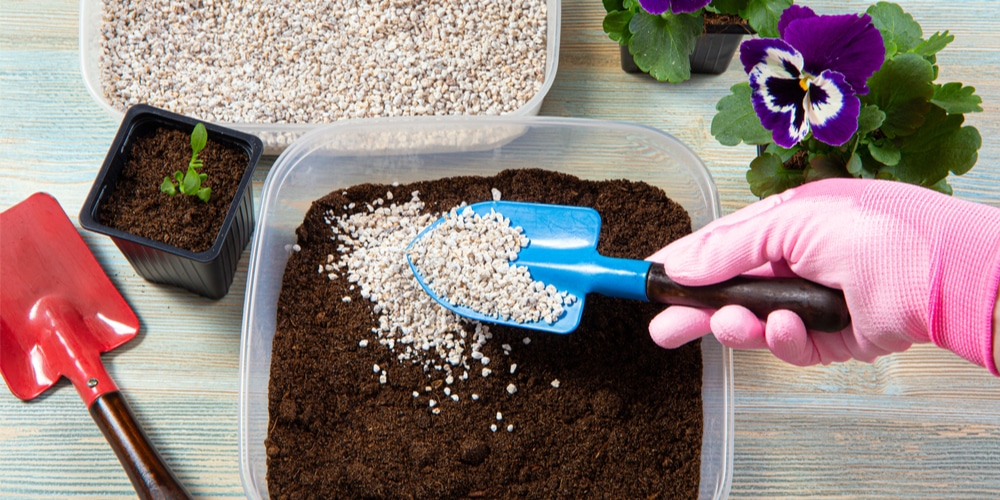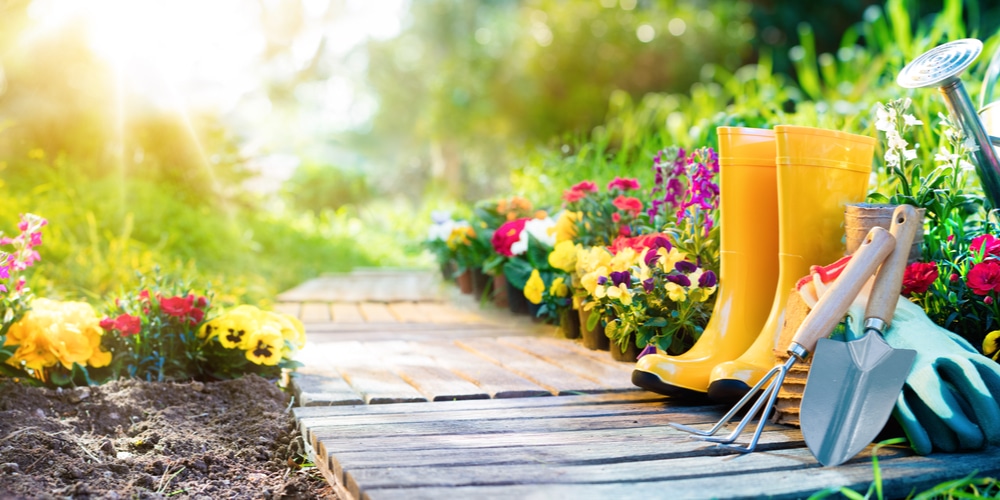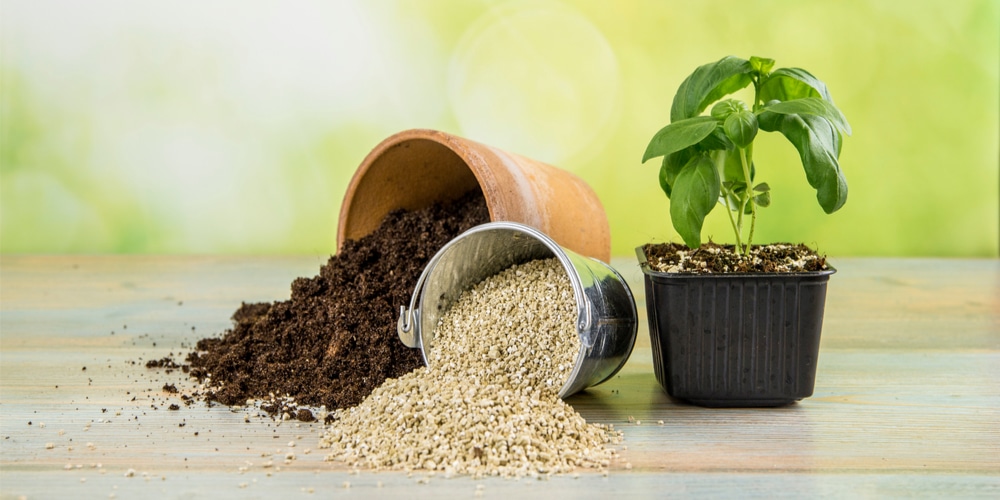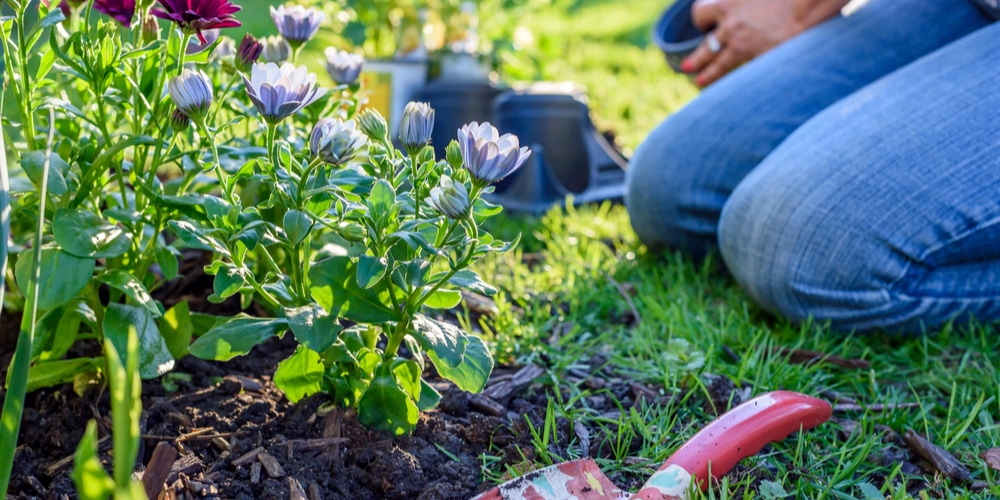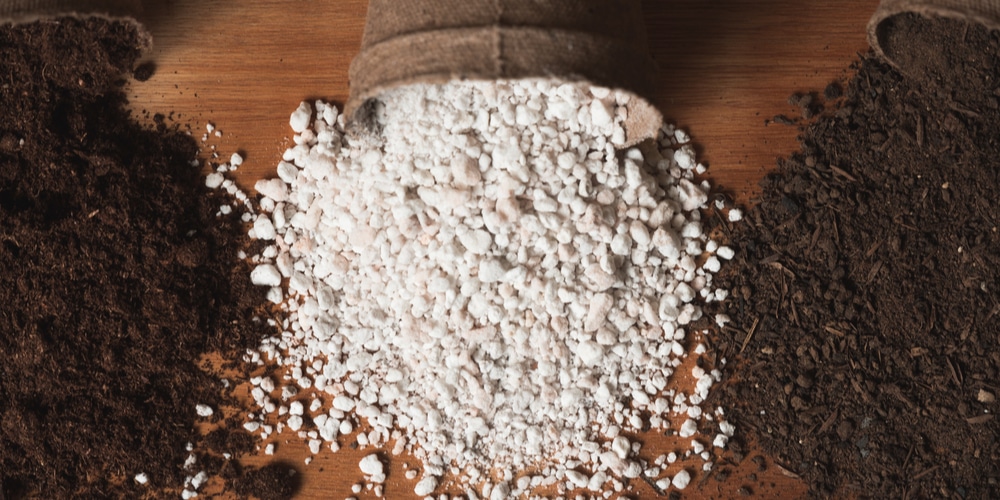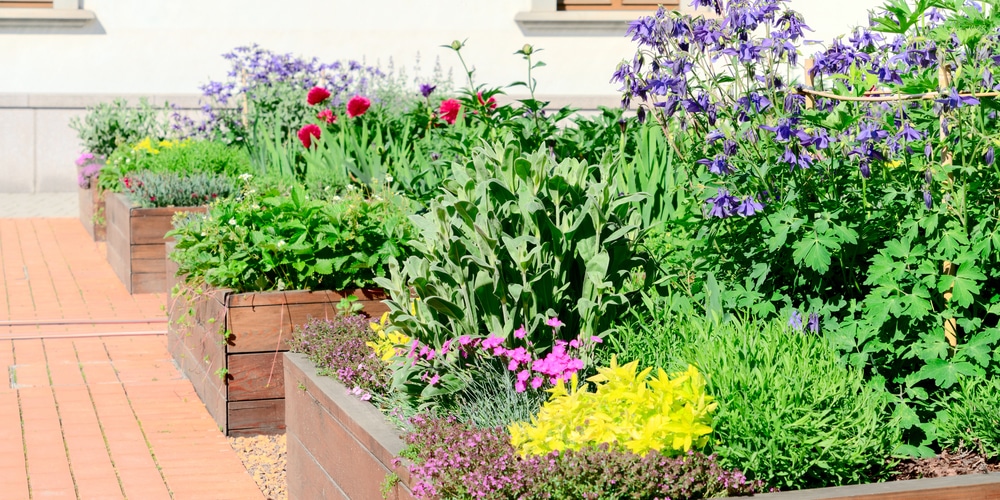In your quest to find a suitable soil amendment for your plants, you’ll have come across perlite and vermiculite. Before you spend your hard-earned money, though, you should know what Perlite is, what Vermiculite is, and the differences between them. More importantly, you should know when to use Perlite vs. Vermiculite when mixing a suitable soil medium for your plants.
Take a look at our perlite vs. vermiculite definition, comparison, and benefits below.
What is Perlite?
Perlite is sourced from the earth, mainly in volcanic rocks processed until they become the small, white chunky pieces you see in gardening centers.
Grab a handful of the stuff, and you’ll find them very dry and very light, which is its primary characteristic. Also, since it’s volcanic rock, it’s tough, and hard to crush into fine powder.
How is Perlite Used in Gardening?
Perlite has the same use as vermiculite in that they’re used as soil amendments. This means that they’re mixed in with ordinary gardening soil to promote aeration and texture.
What’s great about perlite is that it’s sterile and won’t harbor bacteria and mold. Its single most defining characteristic is that it doesn’t hold on to moisture too much, which means certain plants will benefit from it.
Perlite works in both soil and soilless mixes, which is always a plus. You can use it to grow seedlings and mature plants, and they’ll be happier than the ones grown in heavy and compacted soil.
If it helps, perlite has a neutral pH level and can be used as a substitute for sand. Furthermore, it can hold nutrients well and insulate the roots from extreme temperature changes.
Due to its ability to aerate the soil, make it looser, and not hold as much water, perlite is the preferred medium for plants that don’t like their roots being wet for too long. This means it’s great for succulents and cacti, who need only sparse watering and well-draining soil.
What is Vermiculite?
Vermiculite is a silicate comprised of iron, aluminum, and magnesium. Vermiculite is also naturally sourced, then processed, and sold as a soil additive despite how it sounds.
Like perlite, vermiculite is lightweight and allows air to pass through the soil better. It’s relatively sterile, disease-free, and won’t rot or break down into harmful components.
It’s worthy to note that vermiculite does not contain asbestos and is perfectly safe to use for plants and your yard. Unfortunately, the naturally occurring mineral got a bad rap from a mine in Montana, which had asbestos fibers and resulted in severe contamination.
In terms of appearance, vermiculite is coarse, brown, and light. It looks like mica and usually mixes very well with ordinary garden soil.
How is Vermiculite Used in Gardening?
If perlite is good for plants that love relatively dry soil, it’s the opposite for vermiculite.
There are many plant varieties that constantly love moist soil, and vermiculite is an excellent soil additive to meet this requirement. You only have to water once, and the mineral takes care of the rest.
Vermiculite is likened to a sponge that can hold water up to a certain degree. Any more than that, and the water flows out of the pot. It can absorb nutrients well and is non-toxic and odorless, to boot.
Starting soilless mixes can benefit from a good chunk of vermiculite, as seeds and seedlings generally want constant moisture in order to grow quickly. That said, vermiculite has more uses than perlite, but it’s more expensive.
Perlite vs Vermiculite
When comparing Perlite vs Vermiculite, it becomes quite clear that they are not the same. In fact, they’re somewhat opposites when it comes to function.
You’ll be able to recognize perlite or vermiculite by color and texture. Perlite is white, looks a bit like rock salt, and is very hard. In contrast, vermiculite is soft and sponge-like, and beige or brown.
Vermiculite sports a neutral pH, while perlite is slightly alkaline. This is an important characteristic depending on the plant you have. Before adding them in large amounts, it’s best to check the soil for pH first.
Mixing both perlite and vermiculite in the same container is not recommended since they’re made to fill in certain plant and soil conditions.
Should You Use Perlite or Vermiculite in Your Garden?
To determine if you need perlite or vermiculite in your garden, it helps to check what your plants need. Some will want infrequent watering and have their roots dry out, while others prefer constant moisture and appreciate regular soaking every now and then.
Perlite is a great additive for clay soil and is the medium of choice for plants that need to have their soils dry out in between watering. Cacti, succulents, and similar plants will benefit from a handful or two of perlite in their containers.
Perlite can help prevent puddles and crusting on clay mediums, as well as stabilize temperature. Aeration and drainage become better with it. Any perlite that’s fine or medium grade can be used in the garden.
Vermiculite should be your additive when you have plants that love moisture. It’s a good companion for starter soil mixes and helps the seedlings become stronger overall.
It’s worthy to note that vermiculite won’t break down like compost and is likely to stay in the container for a long time. It soaks up water and rain and holds on to them until the soil around it dries out. You can have it as compost on lawns and plant containers as well.
Bottom Line
Overall, both perlite and vermiculite are excellent soil additives and are fairly common. You’ll be able to buy them as needed when the time comes you want to report, start a seed, or improve your soil.
Remember the general rule for perlite and vermiculite- when you want a relatively drier soil, use perlite. However, for moisture-loving plants, use vermiculite. Both of them are safe to use and are non-toxic. Furthermore, they can hold nutrients and are not susceptible to rot, diseases or mold.
You may also be interested in our writeup on Ironite vs. Milorganite as well.
Good luck and happy gardening!
